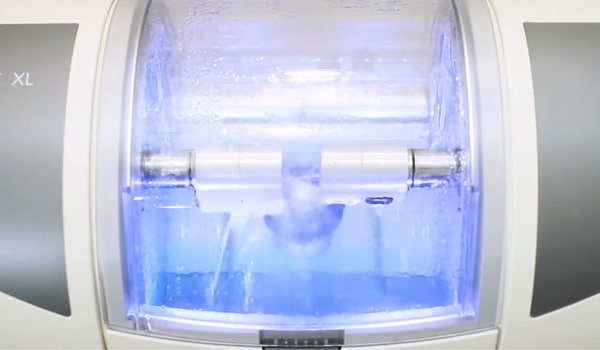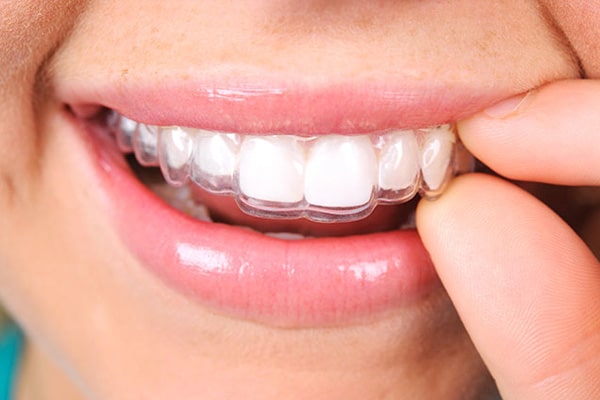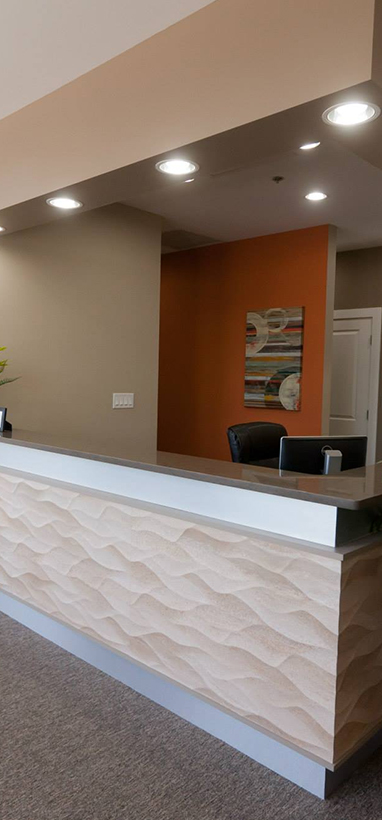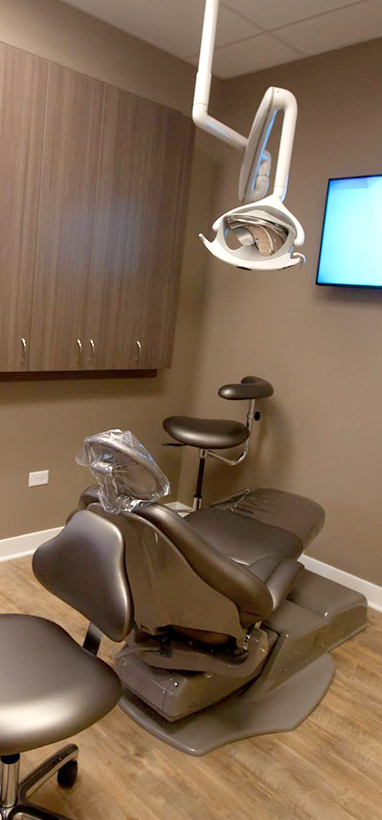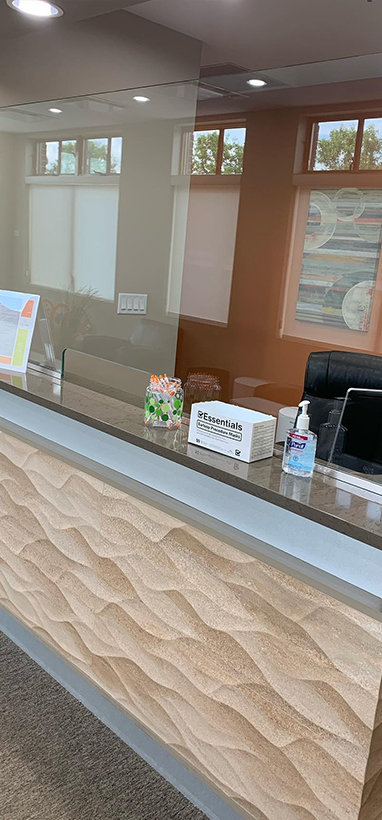1516 Legacy Cir, Naperville, IL 60563
Tooth Erosion – Signs, Causes and Treatment

Have you ever wondered if your food, drink, or lifestyle choices are affecting your teeth? You may have heard about tooth enamel erosion in passing – or from your parents when you were a kid asking to eat candy and drink soda all the time – but do you actually know what it is? Tooth erosion is actually a serious concern that can lead to sensitivity, pain, and eventually even the loss of teeth and other more severe health complications.
In this article, we’ll explain everything you need to know about tooth enamel, tooth erosion and what causes it, whether or not you may be losing enamel, and what to do about it. As you’ll learn about later in the article, tooth enamel erosion is not reversible, but it’s preventable. So the sooner you act, the better off you’ll be. Read on to find out how.
What is tooth enamel?
Enamel is the hard, outermost layer of the tooth, which serves as a protective coating for the sensitive dentin underneath. The dentin makes up the bulk of your tooth, but the thin outer covering of enamel is what helps protect your teeth from daily use such as chewing, biting, crunching, and grinding.
Enamel is actually the hardest tissue in the human body, and it’s actually clear. The white enamel is what actually gives your tooth it’s appearance, although the enamel can be stained due to various factors. For example, coffee, tea, sodas, red wine, cigarettes, and fruit juices can stain the enamel on your teeth. Regular visits to your dentist can polish away the majority of these stains to make sure your teeth stay healthy.
Losing enamel is a concern, because in addition to the physical protection it provides while chewing, it also insulates the teeth (and nerves within your teeth) from hot and cold temperatures. Enamel is actually not a living tissue, so it cannot regenerate when damaged, unlike other tissues in your body.
What is tooth enamel erosion?
Tooth enamel erosion, or tooth erosion, refers to the loss of enamel caused when acids wear away at this protective layer over time. Even though it’s incredibly hard, your tooth enamel is very susceptible to acids, even acids that develop from everyday foods and drinks (particularly those that are sugary and starchy). And unlike a broken bone, enamel doesn’t repair itself, so when it chips or cracks, it’s permanent. The same goes for tooth erosion; once the enamel is gone, it’s gone forever. But while enamel erosion is irreversible, it’s very preventable and manageable.
Losing your tooth enamel puts you at increased risk for tooth decay, which a growing body of evidence shows, can put you at significantly greater risk for serious health issues such as heart disease, diabetes, and dementia. So while your enamel may seem like a cosmetic issue, protecting and maintaining all aspects of your dental health is critical for your overall health and well-being.
Signs of Enamel Loss
How do you know if you’re suffering from tooth enamel loss? The signs of enamel erosion can vary, depending on the stages. Some of the signs are:
- Sensitivity. Some foods, like sweets, and either hot or cold foods may cause pain at the early stages of tooth erosion.
- Discoloration. Eroding enamel, exposing the dentin, may appear yellow in color.
- Tooth Cracks and Chips. If you’re noticing that the edges of your teeth are becoming rough, irregular, or jagged, this may be a sign.
- Visible Tooth Erosion at Gum Line. Enamel erosion may also play a role in creating abfractions, which is a type of tooth damage near the gumline.
Causes of Tooth Enamel Erosion
In general terms, tooth erosion occurs when acid wears away at the teeth, but there are a number of reasons why this may happen. Some causes of acid erosion are:
- Drinking high levels of soft drinks and sports drinks
- Fruit juices and fruit drinks, such as lemon juice
- A diet high in added sugars, starches, and processed foods
- Chronic dry mouth (xerostomia)
- Acid reflux (GERD)
- Gastrointestinal issues
- Medications such as antihistamines and aspirin
- Genetics and inherited conditions
In addition to the above, there are a number of environmental factors that contribute to enamel erosion and decay. These environmental factors are:
- Plaque Build Up. Plaque bacteria produce acids that wear away at enamel, so improper tooth cleaning can lead to acid attacks and enamel erosion.
- Friction. Also known as attrition, this is natural tooth-to-tooth grinding that may happen when you clench or grind your teeth. This may even happen during sleep.
- Wear and tear. This physical wear and tear may occur from things such as brushing your teeth too hard, improperly flossing, biting on hard objects such as pens, fingernails, ice cubes, or bottle caps, or chewing tobacco.
- Stress Fractures. This may happen when the tooth is flexed or bent, which can cause cracking.
Corrosion. If acidic content hits the tooth, such as with vitamin C tablets, aspirin, GERD, or even frequent vomiting due to bulimia or alcoholism.
How to Prevent Tooth Erosion
The bad news is that your tooth enamel cannot be restored. The good news is there a number of things you can do for tooth erosion treatment, and most of them are very simple. In fact, your overall diet can certainly help prevent dental erosion.
Some of the best things to do include:
- Only have acidic food and drinks at meal times. Consuming these only in the context of a larger meal will reduce the acid damage to your teeth. It’s advisable to limit your consumption of these types of foods in general.
- Sports drinks, unfortunately, can lead to tooth decay. However, sports drinks do provide athletes with the hydration they need for intense bouts of exercise. So as a general rule, limit sports drinks to the times you really need them.
- If drinking something acidic, don’t swish your drink around your mouth. You can also use a straw to help the drink go to the back of your mouth.
- If you do consume acidic foods or drinks, rinse out your mouth with clear water immediately.
- Drink more water throughout the day in general.
- Chew sugar-free gum after eating to help produce more saliva to help cancel out the acids that form in your mouth post-meal.
- After drinking or eating anything acidic, wait for at least an hour before brushing your teeth.
- Make brushing your teeth the last thing you do every night, and brush at least one other time during the day, with fluoride toothpaste. Use a small-headed brush soft bristles.
- Spit out after brushing and don’t rinse, so that the fluoride stays on your teeth longer.
- Ask your dentist if there are any enamel erosion treatment options, such as enamel erosion repair and sealants. While enamel cannot be rebuilt, there are some preventive ways to add a protective layer over the enamel to help protect your teeth.
Concerned you may be dealing with some tooth enamel erosion? At the Living Well Dental Group, we can perform a full analysis of your teeth and recommend the best options to help to protect your tooth enamel and prevent any future decay. There’s really no time to delay: the sooner you address your dental health and potential tooth enamel erosion, you’ll have a better chance to restore your healthiest smile and help to preserve your overall health and well-being. Contact us to schedule an appointment now!



